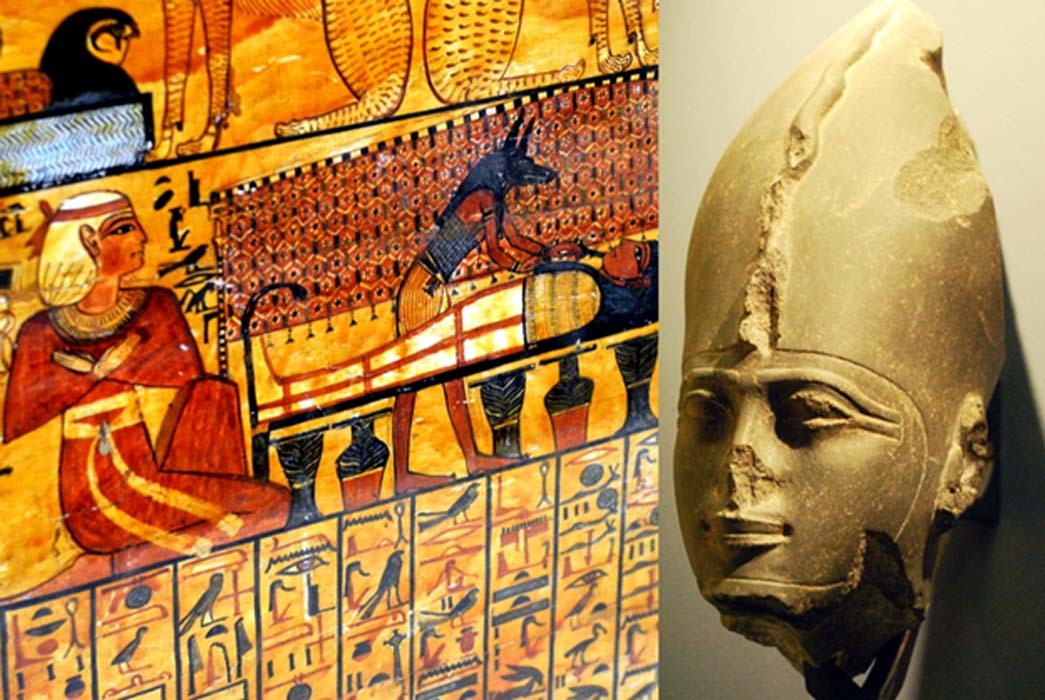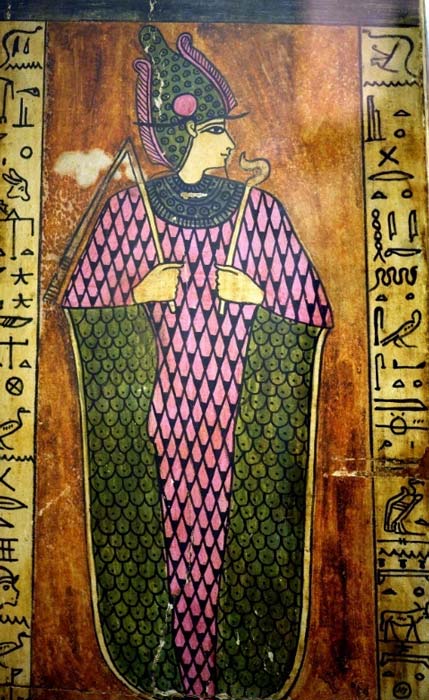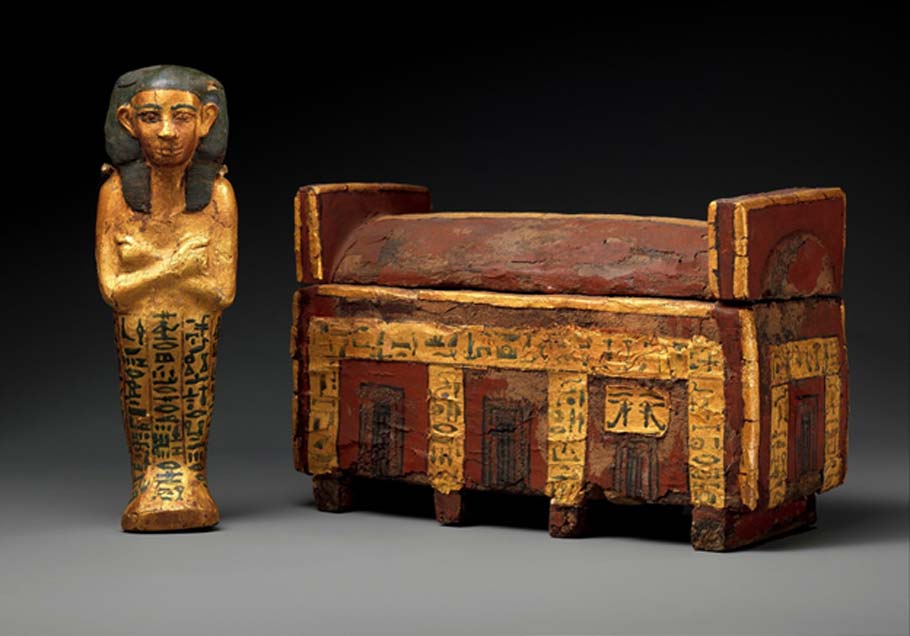
Life after Life: Guidebook to Conquering Dangerous Demons and Dark Waters in Duat – Part II
One of the pivots for the successful implementation of ‘heka’, the ancient Egyptian term for magic, was words – both spoken and written – and the latter was considered the most powerful form. Scores of vases, potsherds and voodoo dolls have been found with religious formulae and curses written on them in red ochre (as the color symbolized the powers of destruction) by priests and magicians on behalf of their clients.

Given the choice of colors, this is a rather unusual depiction of Osiris on a sarcophagus lid. Egypt, Second Century AD. Allard Pierson Museum. (Rob Koopman/CC BY-SA 2.0)
Over time, the lines between religious practice and magic blurred as a result. Miriam Lichtheim, the renowned translator of ancient Egyptian texts explains: “The Egyptian was well aware of the distinction between a prayer and a magical spell; but he did not view the ethical-religious approach as incompatible with magical manipulation. Not being inimical, the two approaches could join forces; and their combination in the literary context was something that practiced scribes could evidently do with ease.”

This model coffin and shabti of Wahneferhotep, the King's Son, is made from wood, paint and gold leaf. It was found at the causeway of the pyramid of Senusret I, el-Lisht; Twelfth or Thirteenth Dynasty. Inscribed funerary spells enabled the owner to avoid working in the afterlife. Metropolitan Museum of Art, New York. (Public Domain)
PASSING THROUGH REALMS GUARDED BY MONSTERS
Thus, the Book of the Dead supplied myriad mystical names and spells to utter when the soul was confronted with both malevolent and benevolent entities in its long voyage into the afterlife. With the knowledge of all these techniques, the soul of the dead was equipped to pass a series of gates and realms guarded by terrifying beings and menacing spirits; many depicted with human bodies and grotesque heads of animals and other inexplicable creatures; not to mention monsters made up of different animal parts bearing various kinds of weapons. All this apart, the souls had to voyage through caverns, fields and rivers of fire – which makes the entire exercise sound much like a modern-day videogame – except, for the ancients, it was the real deal.

Large limestone amulet figurine of goddess Sekhmet, the lioness, holding the Eye of Horus Wedjat in her left hand. Harrogate Museums and Arts. (CC BY-SA 4.0)




